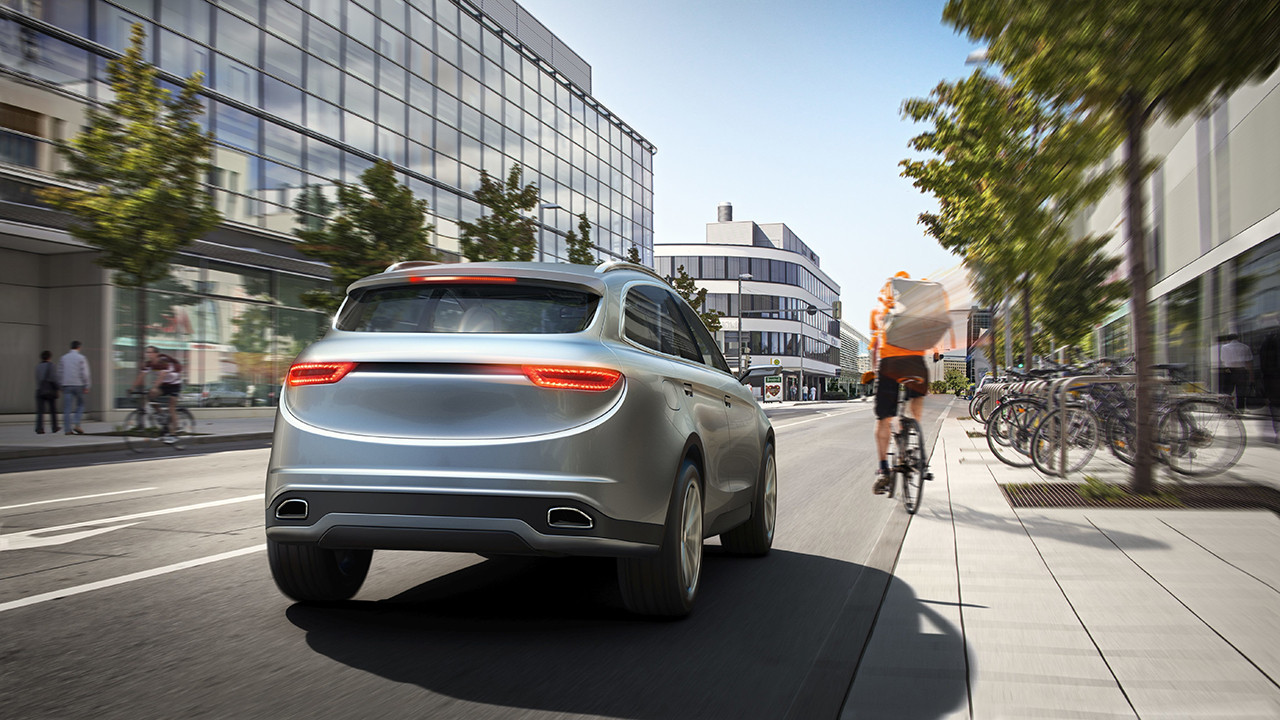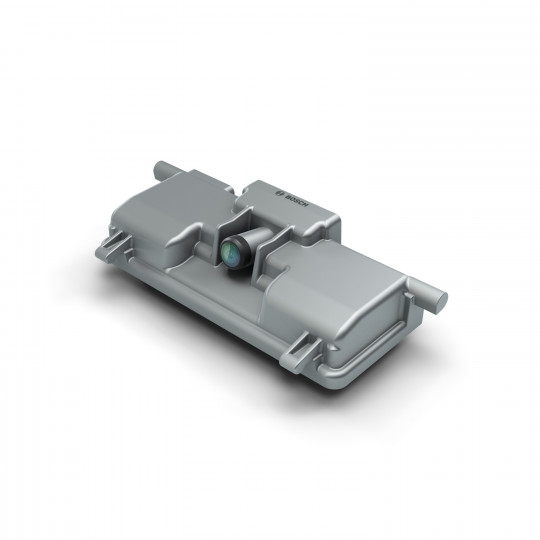Stuttgart, Germany, and Yokohama, Japan – Automated driving technology is gradually providing more and more assistance to the driver – with the future aim of the car being able to take complete control. But there is more to it than that: "We want to make cars better drivers than people, and in this way to increase road safety. In other words, technology has to work more reliably than people," says the Bosch management board member Harald Kroeger. That presents a major challenge, particularly in terms of surround sensing. Only if it knows exactly, and at all times, what is going on around it can an automated vehicle choose the right, and above all safe, driving strategy. Bosch uses various technologies for surround sensing, including ultrasound, radar, and video. When it comes to structure and function, cameras come closest to the human eye, which is why they will be such invaluable assets for automated driving, and indeed why they already play a key role in driver assistance. Bosch has now succeeded in taking automotive camera technology to a new level. This new Bosch technology is set to debut in vehicles in 2019. The combination of its unique multi-path approach and artificial intelligence (AI) for object recognition will make surround sensing far more reliable, and road traffic safer. Bosch aims to be the market leader, and the measure of all things in camera technology.
Human drivers: looking but failing to see
Cars with driver assistance, automatic emergency braking systems, and automated driving capability must be able to see all objects in their surroundings. On top of that, they must be able to detect in a flash if an object is relevant for their driving strategy. And just as quickly, they have to determine what their reaction to relevant objects should be. Should they brake, swerve, or continue on their path? Unlike the human eye, the new Bosch MPC3 mono video camera has been optimized to handle such decisions. For humans, looking is one thing, but actually recognizing what our eyes see is another matter. Our eyes may be marvels of nature, but we have our weaknesses when it comes to visual perception. Just because we see something does not mean that we recognize and understand it. Many drivers who are involved in accidents say that they had been looking in the right direction but failed to spot the other party. It is estimated that up to 50 percent of road traffic collisions are attributable to this phenomenon. The new Bosch camera is superior to the human eye in this respect, not least because it never gets tired, and works just as well after hours of driving as during the first kilometer.
Bosch technology makes new and improved driver assistance systems possible
The new technology’s great strength lies in its robust object recognition, enabled by Bosch’s multi-path approach. This also makes use of artificial intelligence. For example, Bosch engineers have taught the camera to reliably detect if the edge of the road is passable, even in the absence of road markings. This camera intelligence is based on Bosch know-how and integrated into a chip, known as V3H, made by the Japanese company Renesas. It can also improve legacy driver assistance systems and extend their application range. For instance, it could enhance automatic emergency braking systems to prevent vehicles hitting various types of animals. It could also make emergency braking more reliable, since the camera can recognize pedestrians even when they are partially concealed. The Bosch innovation also improves road-sign recognition. The new Bosch camera features optical character recognition that reliably reads text and numbers on road signs, and presents this information to the driver on a dashboard display.
Engineers working in the Hungarian centre of Bosch also take part in the development of the cameras
Bosch’s engineers working in Hungary also take part in the development of the special cameras as members of an international project team. Colleagues of Budapest Development Centre are involved in the hardware and software development and testing on a system-level. They contribute to the realization of the function based on traffic sign recognition, lane keeping, intelligent headlight control, automatic emergency braking and video based adaptive cruise control (ACC) during the software development. In addition, the engineers working in the Hungarian centre of Bosch carry out simulation tests and control the correct functioning of the system by using test cars. Manufacturing the electronics of the cameras will take place in the Hatvan plant of Bosch.
The camera with AI won an award in a company-internal innovation contest.
Zita Hella Varga
Phone: +36 70 667-6374
Mobility Solutions is the largest Bosch Group business sector. In 2018, its sales came to 47.6 billion euros, or 61 percent of total group sales. This makes the Bosch Group one of the leading automotive suppliers. The Mobility Solutions business sector pursues a vision of mobility that is accident-free, emissions-free, and fascinating, and combines the group’s expertise in the domains of automation, electrification, and connectivity. For its customers, the outcome is integrated mobility solutions. The business sector’s main areas of activity are injection technology and powertrain peripherals for internal-combustion engines, diverse solutions for powertrain electrification, vehicle safety systems, driver-assistance and automated functions, technology for user-friendly infotainment as well as vehicle-to-vehicle and vehicle-to-infrastructure communication, repair-shop concepts, and technology and services for the automotive aftermarket. Bosch is synonymous with important automotive innovations, such as electronic engine management, the ESP anti-skid system, and common-rail diesel technology.
The Bosch Group is a leading global supplier of technology and services. It employs roughly 410,000 associates worldwide (as of December 31, 2018). According to preliminary figures, the company generated sales from operations of 77.9 billion euros in 2018. Its operations are divided into four business sectors: Mobility Solutions, Industrial Technology, Consumer Goods, and Energy and Building Technology. As a leading IoT company, Bosch offers innovative solutions for smart homes, smart cities, connected mobility, and connected manufacturing. It uses its expertise in sensor technology, software, and services, as well as its own IoT cloud, to offer its customers connected, cross-domain solutions from a single source. The Bosch Group’s strategic objective is to deliver innovations for a connected life. Bosch improves quality of life worldwide with products and services that are innovative and spark enthusiasm. In short, Bosch creates technology that is “Invented for life.” The Bosch Group comprises Robert Bosch GmbH and its roughly 440 subsidiary and regional companies in 60 countries. Including sales and service partners, Bosch’s global manufacturing, engineering, and sales network covers nearly every country in the world. The basis for the company’s future growth is its innovative strength. At 125 locations across the globe, Bosch employs some 69,500 associates in research and development.
Additional information is available online at www.bosch.com, www.iot.bosch.com, www.bosch-press.com, www.twitter.com/BoschPresse





